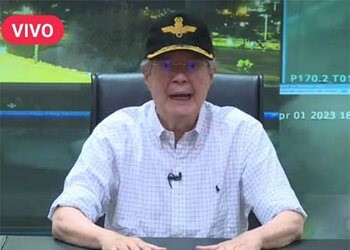Ecuador is allowing civilians to carry guns in response to growing insecurity, potentially worsening the country’s violence by giving criminals greater access to weapons.
President Guillermo Lasso announced a decree on April 1 that lifts a 12-year-old ban on civilians carrying firearms.
“Ecuadorians, we have a common enemy: delinquency, drug trafficking, and organized crime,” he said.
SEE ALSO: Ecuador’s Navy Grappling With Mounting Evidence of Criminal Collusion
Those who seek to carry a gun must be over 25 and pass a psychological evaluation, a drugs test, and receive a certificate of skill in handling and using firearms. Anyone with a criminal record or history of domestic violence remains banned from purchasing a firearm. Ecuador’s pre-existing gun law specifies that civilians may only own “personal defense” weapons, meaning specific types of pistols, revolvers, and shotguns.
The president’s announcement comes amid a period of extreme violence in the country. Last year, murders in Ecuador rose more than 80%, with experts pointing the finger at the country’s drug trafficking groups.
Over the last two years, gangs have driven a dramatic rise in bloodshed in prisons, set off car bombs in major cities, and slaughtered judicial officials. As well as inflicting violence, gangs have sought to terrorize the population with acts like hanging bodies from overpasses.
InSight Crime Analysis
The removal of weapons restrictions comes in response to growing security fears among Ecuador’s civilians, but similar strategies have gone awry elsewhere in Latin America.
In Brazil, loosened gun laws led to some legally purchased weapons falling into the possession of criminals. The same could happen in Ecuador, said Carla Álvarez Velasco, professor at Ecuador’s National Institute of Higher Studies (Instituto de Altos Estudios Nacionales – IAEN Ecuador).
“They are using gasoline to put out the fire,” Álvarez Velasco said.
SEE ALSO: Murder Record Broken in Northern Ecuador as Gang Feuds Fuel Violence
The situation differs somewhat from that in Brazil. There, loosened laws saw gangs accessing legally bought, high-powered weapons such as assault rifles. But Ecuador’s rules limit citizens to carrying only weapons of “personal defense,” meaning criminals will not be given a new avenue to acquiring military-grade weaponry.
Nevertheless, criminals in Ecuador can access firearms that are prohibited for civilians via arms trafficking from other countries in the region and security forces trafficking weapons to gangs. Reliable estimations of how many guns are already in the country are hard to come by. Assemblymember Esteban Torres, who has voiced support for removing weapons restrictions, claimed in December 2020 there were between 350,000 and 400,000 illegal firearms in the country.
Notably, the restrictions lifted by Lasso were put in place in 2011 by former President Rafael Correa during a time of increasing violence. Ecuador’s murder rate dropped precipitously in the years following the band, reaching a low of 5.7 per 100,000 in 2017. But violence has skyrocketed in recent years, pushing the murder rate to a record 25.7 per 100,000 last year, as a result of gang competition over drug trafficking routes and other criminal economies.

